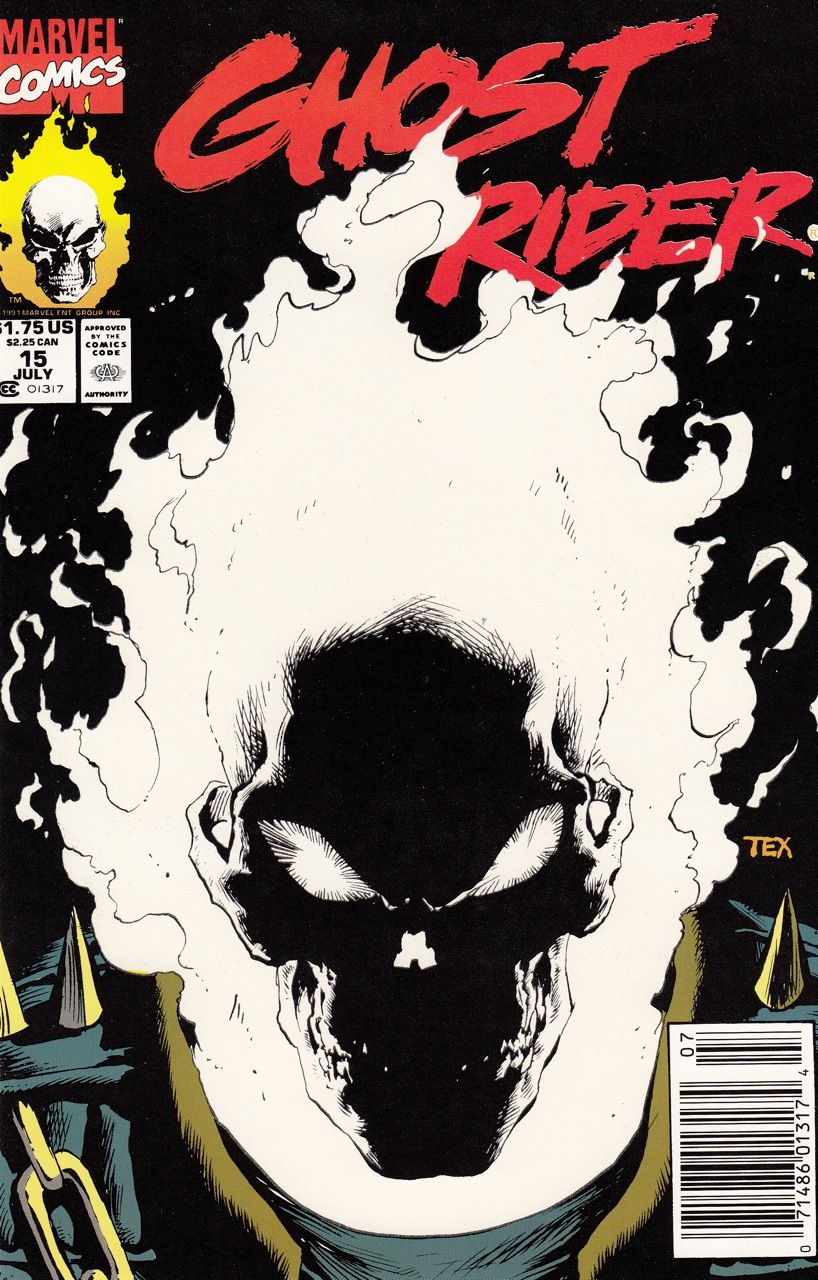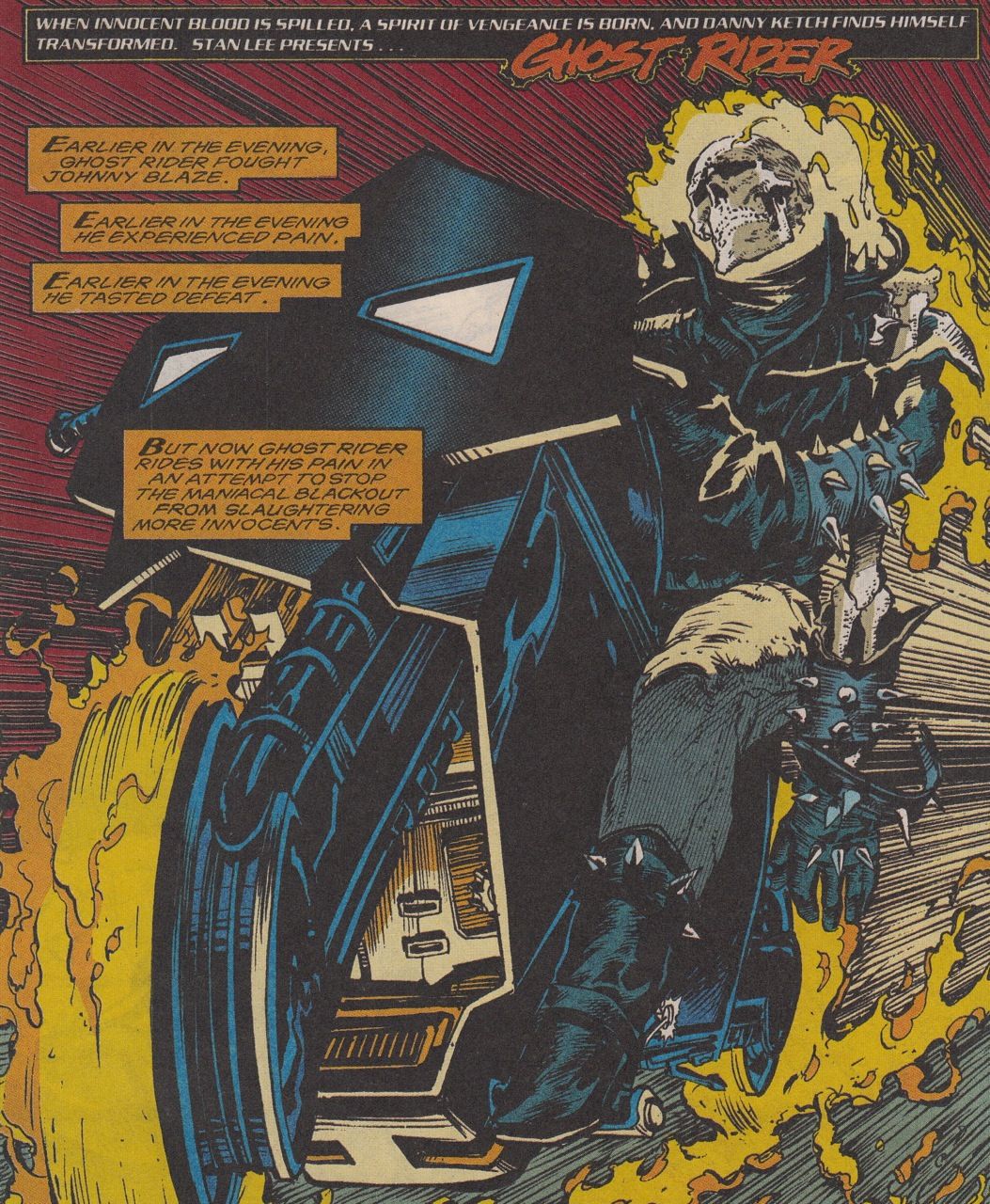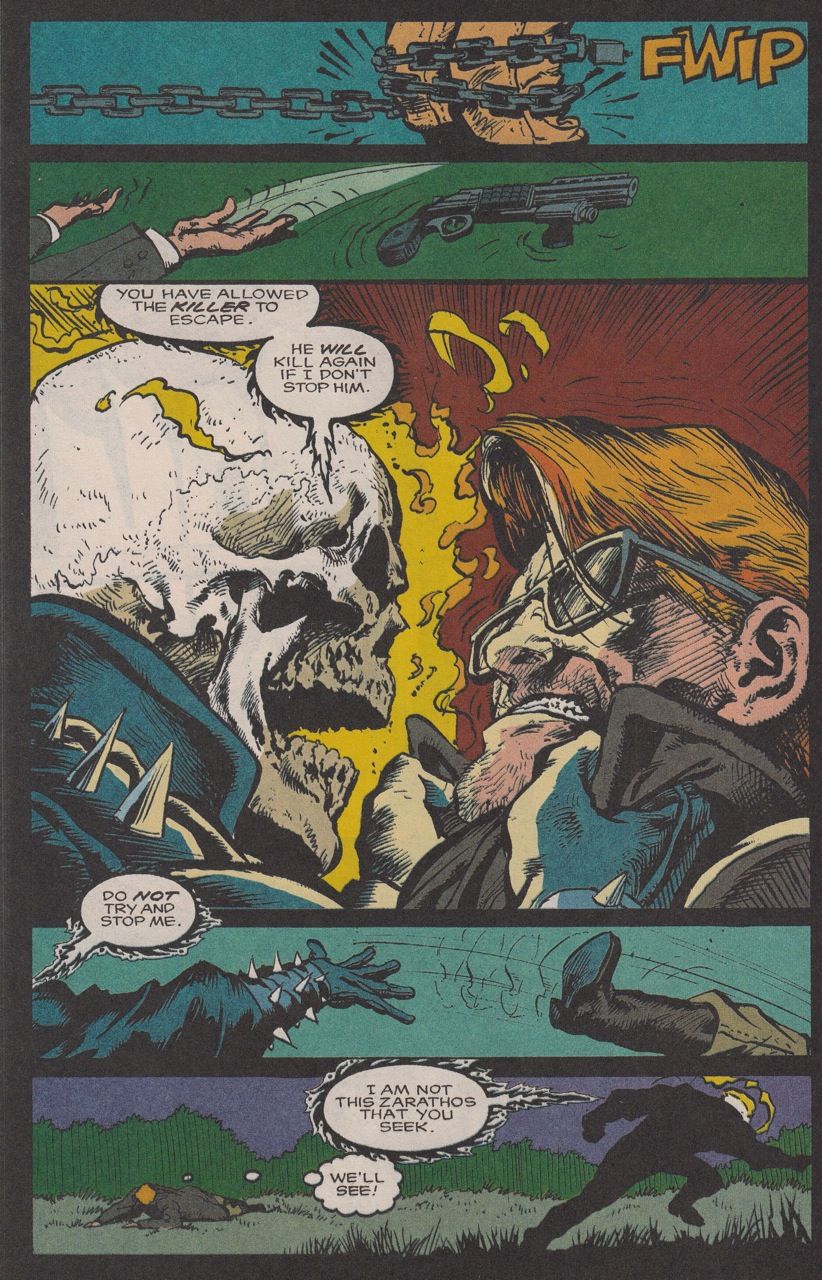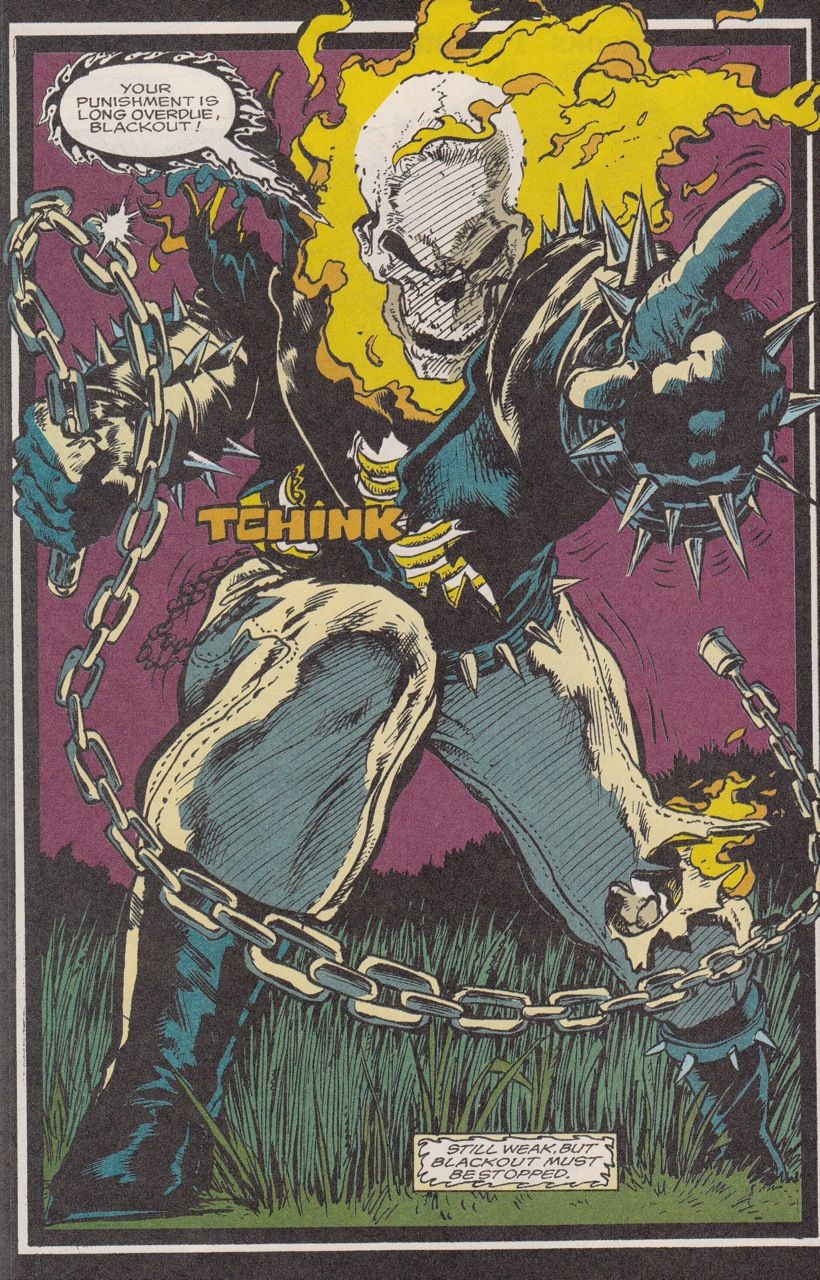In this column, Mark Ginocchio (from Chasing Amazing) takes a look at the gimmick covers from the 1990s and gives his take on whether the comic in question was just a gimmick or whether the comic within the gimmick cover was good. Hence "Gimmick or Good?" Here is an archive of all the comics featured so far. We continue with the glow-in-the-dark cover for Ghost Rider #15...
Ghost Rider #15 (published July 1991) – script by Howard Mackie and art by Mark Texeira
I’ve had many of you ask via the comments section when I was going to get to this comic, but I thought I’d wait for it to coincide with the All-New Marvel Now reboot of Ghost Rider, which was released earlier this week. If ever there was a Marvel 90s gimmick cover Mount Rushmore (I think this is something we should make happen right now), Ghost Rider #15 would probably be up there alongside Spider-Man #1, X-Men #1 and Silver Surfer #50. As the House of Idea’s very first glow-in-the-dark cover (though Vertigo’s Sandman Special #1 beat them to the punch industry-wide), Ghost Rider #15 is one of the most famous comics from the 1990s.
But what about inside the comic?
Pardon the pun, but early 90s Ghost Rider was white hot in terms of popularity and sales. Howard Mackie and Mark Texeira had launched a third volume of the series in 1990 replacing Johnny Blaze with a new Ghost Rider named Daniel Ketch. Audiences immediately took to Ketch, and Marvel was soon using Ghost Rider in other series to boost the sales of some of its sputtering titles. Ketch’s version of the character was also used to launch other spinoff titles under the “Midnight Sons” label.
Ghost Rider #15 effectively uses the added attention the gimmick cover unquestionably attracted to reintroduce and flesh out a number of the book’s key players and themes. The comic is far from perfect, but the creative team manages to create an enjoyable read and Texeira’s art particularly is a standout.
The central conflict of this comic focuses on Ketch trying to find his footing as a hero. A few issues earlier, Danny’s sister, Barbara, was killed by the demonic villain Blackout, giving Ketch a thirst for vengeance. But Danny is trying to balance his need for justice with his desire to act heroically. Meanwhile, others, including Blaze, who is hunting Danny because he believes he is possessed by the demon Zarathos, doubt Ketch’s intentions.
Giving Ketch so many different obstacles to overcome in this issue helps reaffirm his heroic qualities. There’s obviously a fair bit of “anti-hero” in Ghost Rider’s make-up (and most of us are well aware of how the Marvel Universe was chock full of anti-heroes in the early 1990s). But watching Danny beat on Blackout only to have him stop himself from killing the villain at the last second (with Blaze’s urging) is a nice character moment for Ketch. And having the “old” Ghost Rider skeptically following the new character, only to reconsider and reach an understanding with Ketch at the end, is a worthwhile use of the “changing of the guard” trope.
My primary issues with this comic relates to Mackie’s script, which periodically comes across as very formulaic and clichéd. Having Ghost Rider say things like “Your punishment is long overdue,” or “His face now reflects his scarred soul,” is just so wooden and lifeless. And this is a problem I have with Mackie’s writing outside of the world of Ghost Rider as well. It’s unfortunate because Mackie has actually scripted a handful of stories that I really like as a fan, but his writing just lacks any pop or excitement.
Texeira’s art on the other hand is very unique and exciting. A classically trained painter, some of Texeira’s full page spreads are a real pleasure to look at, and the cleanness of his pencils helps make the book’s action easy to follow. Considering Ghost Rider’s rise to prominence coincided with the industry’s surge of artistic bombast, it’s nice to find such elegance in a book that sold hundreds of thousands of copies.
Factoring in Texeira’s art mixed with a worthwhile story about a hero coming into his own, and some of the missteps in Mackie’s dialogue can be easily overlooked. There’s not a ton of depth to this story, but as a self-contained issue, it works well enough to be an entertaining read.
Verdict: Good





